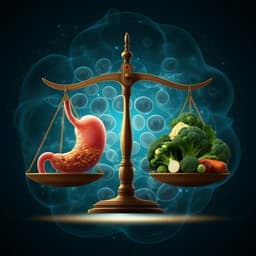
Health and Fitness
Effect of time restricted eating on body weight and fasting glucose in participants with obesity: results of a randomized, controlled, virtual clinical trial
P. M. Peeke, F. L. Greenway, et al.
In an innovative pilot study, researchers explored the impact of a 14-hour metabolic fast combined with a commercial weight management program on weight loss and blood glucose levels in individuals with obesity. The findings demonstrate that this approach can lead to significant weight loss and improved fasting blood glucose levels, particularly among participants with elevated baseline levels, thanks to the efforts of authors Pamela M. Peeke, Frank L. Greenway, Sonja K. Billes, Dachuan Zhang, and Ken Fujioka.
~3 min • Beginner • English
Related Publications
Explore these studies to deepen your understanding of the subject.







